The Core
The Core functions as an external GPU dock, the idea being that it houses and powers a desktop-class graphics card which you can connect to your Blade Stealth via Thunderbolt 3. The theory is to give you the combination of a system that is very lightweight and portable for on-the-go use but can offer desktop-class graphics performance when you're back at home – let's see how it works in practice.For starters, the Core itself is a truly lovely bit of hardware. The steel chassis is thick, weighty and very well built. It's not the most exciting thing we've ever laid eyes on but the design still feels modern and sleek.
The unit is well ventilated all around, so cooling shouldn't be an issue. There are two fans on the bottom that act as intakes to cool the unit, power supply and also to help your graphics card out. The mesh, where used, is pretty tightly packed, although there's no true dust filtering material so the occasional clean may be in order.
Removing the inner unit is as simple as flipping out the rear handle and giving it a tug – it's a wonderfully simple and tool-free mechanism, and closing the handle back up locks everything in place.
Inside we find a 500W Enhance-built PSU with two 6+2-pin PCI-E cables protruding. Coupled with the PCI-E slot being able to deliver the standard 75W, this means there's up to 375W available for graphics cards – plenty for today's flagship models, even with overclocks applied. The power supply can deliver 41A on the 12V rail i.e. 492W, basically its entire capacity – it would be silly if it couldn't, but we thought we'd check nonetheless.
A single thumbscrew releases the blanking plate and you can then install your graphics card as you would in any normal expansion slot – it's all very simple and user-friendly such that even a complete novice would struggle to get it wrong. The Core is sizeable enough to accommodate practically all modern graphics cards, although those with very tall heatsinks may have issues – Razer itself found that some Asus Strix cards would fit while others wouldn't due to slight variation in the heat pipe size, for example.
Close the unit back up, connect the kettle lead for power and after that it's ready for connection to the Blade Stealth (or other Thunderbolt 3-equipped Blade notebooks, for that matter) via the included 40Gbps cable, which we found to be really rather short. That bandwidth (5GB/sec) is still some way off the near-16GB/sec theoretically offered by a x16 PCI-E 3.0 connection on a desktop motherboard, but GPUs are rarely if ever bandwidth-limited.
The Thunderbolt 3 connection is not only used to transfer graphics data between the Core and the laptop. The versatility of the specification means Razer has been able to include a four-port USB 3.0 hub on the Core as well as a single Gigabit Ethernet port. This means you can leave it on your desktop with a display connected to the GPU and a mouse, keyboard and USB headset also wired in so that it's always ready to go. The Core will also charge the laptop and you can also set a number of lighting effects for its Chroma RGB LEDs in Synapse if that's your thing.
The setup is extremely easy: It's literally plug and play. Plugging it in turns the unit on automatically. After a few screen flashes the unit will be connected and you're free to install your AMD or Nvidia drivers. It took us a few reboots to get things perfectly, but we were using a development sample that had been upgraded from an older version of Windows. Still, once everything is set up, connecting or disconnecting the unit results in a very quick transition between the onboard and external graphics and you're ready to game or go without rebooting.
The one irritation with the Core, as you've probably guessed, is the price. £500 for a basic 500W PSU, a couple of fans, a fairly simple PCB and a steel chassis is a serious amount of cash. There are surely R&D costs to cover, but there's taking a margin and there's taking the biscuit, and Razer, as far as we can see, is stuffed with Hobnobs and Digestives in this instance – when we first saw the price we expected it to include a GTX 1060 or something. Don't get us wrong; the Core is a lovely unit that's hard to fault, but it's seriously overpriced. You can at least save yourself £100 if you buy it with a Blade Stealth or Blade, but this is a limited time offer.
Specifications
- Dimensions (mm): 105 x 340 x 218 (W x D x H)
- Connection: Thunderbolt 3 (40Gbps)
- GPUs supported: One
- GPU maximum dimensions (mm): 310 x 44 x 152 (W x D x H)
- Power supply: 500W, 2 x 8-pin PCI-E connections
- GPU maximum power: 375W
- Outputs: 4 x USB 3.0, 1 x Gigabit Ethernet
- Extras: Two-zone Razer Chroma RGB lighting

MSI MPG Velox 100R Chassis Review
October 14 2021 | 15:04


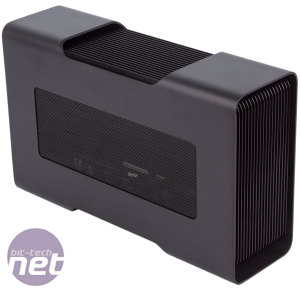
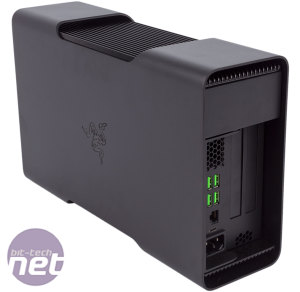

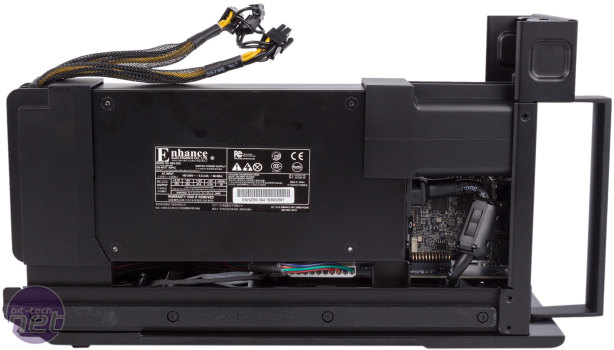
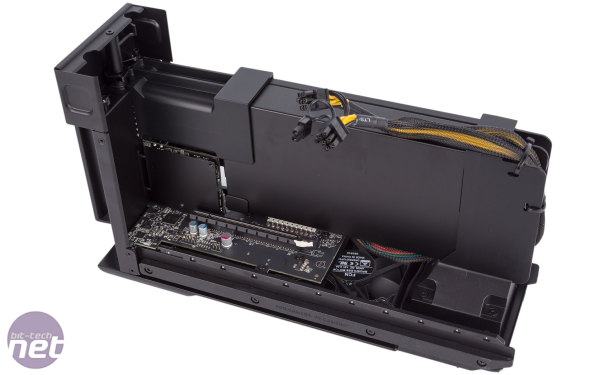
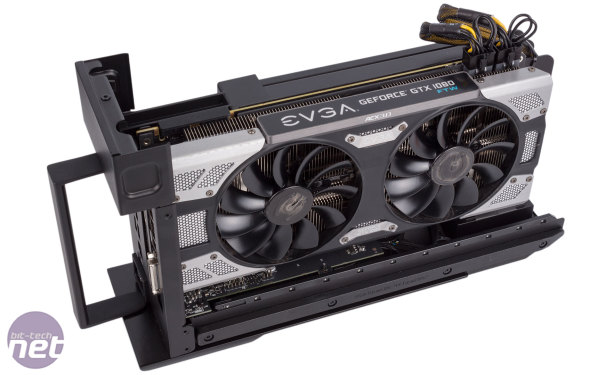

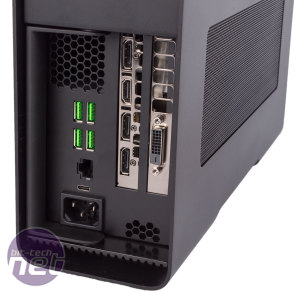







Want to comment? Please log in.